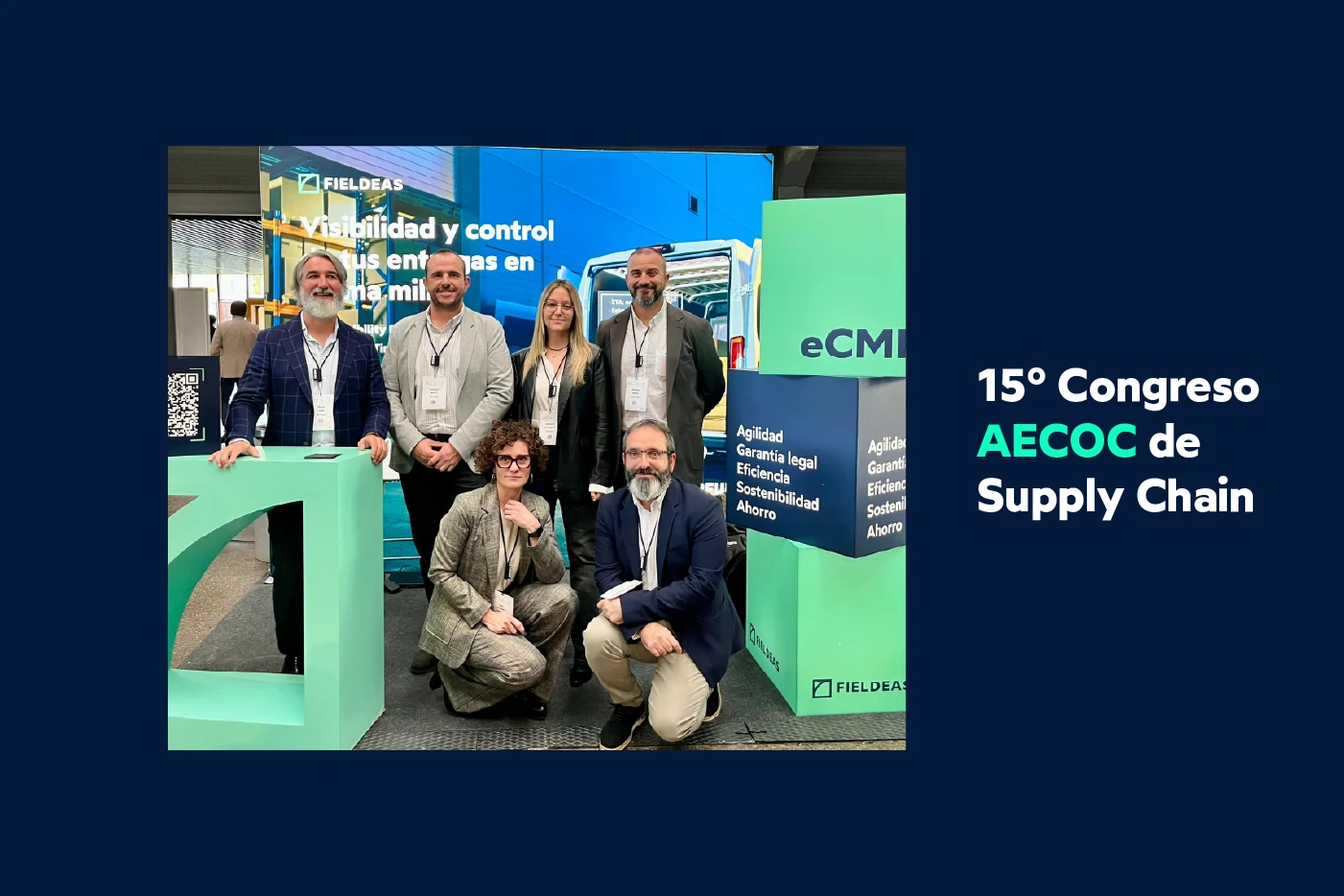What eCMR stoppers do we need to overcome to move forward?
Study “Degree of eCMR implementation in Spain. Challenges and benefits of document digitalization in freight transport”


After having learned the main conclusions of the study “Degree of eCMR Implementation in Spain: Challenges and benefits of document digitalization in freight transport”, in this post we are going to unravel the main eCMR barriers or stoppers that are reflected in the study.
We will also see the solutions that were proposed during the presentation event of the study to each of these stoppers and how the companies that have already implemented this solution have overcome them.
One of the most relevant data from the study is that more than 60% of companies are waiting for eCMR to become mandatory before adopting it. Why?
Despite knowing the main benefits of the electronic transport document and its competitive advantages, transport and logistics companies are stalled in the adoption of eCMR by the existence of significant barriers.
These include change management; associated costs and technical expertise; data security and management; regulatory uncertainty and lack of information; integration between systems; and lack of leadership and collaboration.
While for companies with eCMR the main barrier they detect within their business structure is change management (33.3%), for companies without eCMR it is the absence of international harmonization (20.4%).
Change management is the main barrier identified by companies that already have an eCMR solution, both quantitatively and qualitatively.
Companies report that they have encountered reluctance to change both internally, among their employees, and externally.
Thus, these companies, mainly shippers, explained that they had to go through a major exercise to raise awareness among their transport suppliers and their own employees.
On the other hand, companies without eCMR point to change management as a barrier due to the existence of different technological solutions, which results in each client using a different platform.
In this regard, they explain that the high average age of drivers and the presence of a large number of self-employed drivers complicates successful change management.
Despite this inescapable reality, the companies that already have eCMR assured and demonstrated that a good change management strategy pays off and that, once this barrier is overcome, the implementation of eCMR is a success.
During the round table “eCMR under scrutiny: real experiences of shippers and carriers”, Ignacio Adiego, head of Logistics at Lesaffre, a company that implemented eCMR two years ago, explained that the implementation of this solution will be a success if all the agents involved in the company’s activity, both internal and external, are aligned.
“The key is to bet big, although it is not easy. It is a very good change for all departments and with effort it is achieved,” he said.
25% of companies that have implemented an eCMR solution cite implementation costs as a barrier.
However, this number coincides with the companies that have indicated in the survey that they have developed an eCMR system of their own.
On the other hand, lack of technical expertise is another challenge when implementing eCMR.
During the event to present the study and its conclusions, it was concluded that eCMR is profitable and that the initial investment is not high, based on the testimonies of the companies that already have this solution in place.
In addition, once implemented, no company indicates that eCMR is difficult for its employees to use, so lack of technical knowledge is an easy barrier to overcome, especially if a technology partner accompanies the company throughout the implementation process.
In fact, 100% of companies that have implemented eCMR find it easy for employees to use.
There is concern about data sharing in the digitization of document management.
Companies in the sector are reluctant to digitize transport documents because of the accessibility of the data by external agents.
During the presentation of the study, this concern was disproved by the fact that the eCMR environment is fully controlled.
In addition, FIELDEAS CEO Óscar López pointed out that there are multiple applications that companies are currently applying in cloud models, in which data is shared that is probably much more sensitive from a corporate point of view.
A clear example can be corporate CRM, where organizations are storing data that is absolutely core to their business, yet no one identifies it as a risk.

The absence of international harmonization is the main barrier highlighted by 20.14% of companies without eCMR.
According to the study, companies show significant concern regarding the operation of eCMR outside the national territory.
As a result, companies prefer to wait for regulations to move forward and become clear before starting the transformation process towards eCMR.
In fact, lack of information ranks second in the concerns of companies that have not implemented the solution, with 17.86%.
In this regard, 53.64% consider that there is not enough information available.
The lack of information on eCMR regulations and the lack of specifics on the part of the Administration, which has delayed the date on which eCMR is mandatory, means that this issue is not perceived as a priority (17.86%) compared to the objectives of sustainability and decarbonization, which dominate the attention of companies due to regulatory pressure.
From this situation arises the need for the Administration to get involved in a more proactive way and promote informative and training actions to accompany the sector in the whole process of change.
In fact, as Roser Obrer, Director General of Road and Rail Transport of the Ministry of Transport and Sustainable Mobility, pointed out during the institutional closing of the event, the sector needs the union of the public and private sectors to advance in its digital transformation.
One of the barriers encountered by companies that want to join eCMR is the lack of integration between systems.
Thus, most companies are calling for standardization in document digitization, both at national and European level.
In this sense, they ask for integration between the different eCMR solutions so that all agents are oriented in the same direction and there are as few problems as possible.
The reality is that interoperability between systems when implementing eCMR is uncertain.
Although it is a desire of the entire industry, the regulatory reality shows that it is very difficult to pass a regulation that standardizes the eCMR solution.
However, although interoperability will not be guaranteed, it is feasible if collaboration is encouraged.
In fact, FIELDEAS Track and Trace SeamLess eCMR has the ability to integrate with other business management systems as well as other solutions in order to establish the greatest flow of data and information in real time.
The lack of references in the implementation of eCMR slows down the network effect needed for the digitization of document management in road freight transport.
The eCMR feeds on the network effect; if only one of them does it, the necessary capillarity will not be developed to allow a global development of the model.
Both the opinions reflected in the study and in the presentation of the same coincide in that the shipper should be the one to lead the change towards the digitization of transport document management.
In summary, while at the corporate level the main barriers are change management and international harmonization, at the sector level the stopper of lack of knowledge about eCMR stands out.
Therefore, it is clear that the industry needs a strategy for dissemination and training in eCMR, driven by the government and the private sector.
It is extrapolated that with a higher level of information and greater demonstrated benefits the industry could overcome the uncertainties that eCMR currently presents and generalize its implementation.


07 Nov 2025
Measuring to improve: why your digital form needs KPIs
In the current business scenario, where efficiency and traceability are key to competitiveness, the digital form has become an essential resource for capturing, organizing and analyzing data in real time….

04 Nov 2025
How to integrate eCMR into your company: A step-by-step guide to digitizing transportation
We have already talked several times in this blog about the importance of starting the digital transformation of transportation with document digitalization or eCMR. On this occasion, we are going…

31 Oct 2025
How digital forms drive sustainability in industry
Digital forms have gone from being a simple operational tool to become an essential component of industrial sustainability strategies. Beyond replacing paper, its use transforms the way organizations collect, manage…

29 Oct 2025
Supply chain challenges and the key role of digitization
The 15th edition of the AECOC Supply Chain Congress brought to the table the main challenges facing the supply chain in an uncertain, volatile and highly competitive environment. Under the…